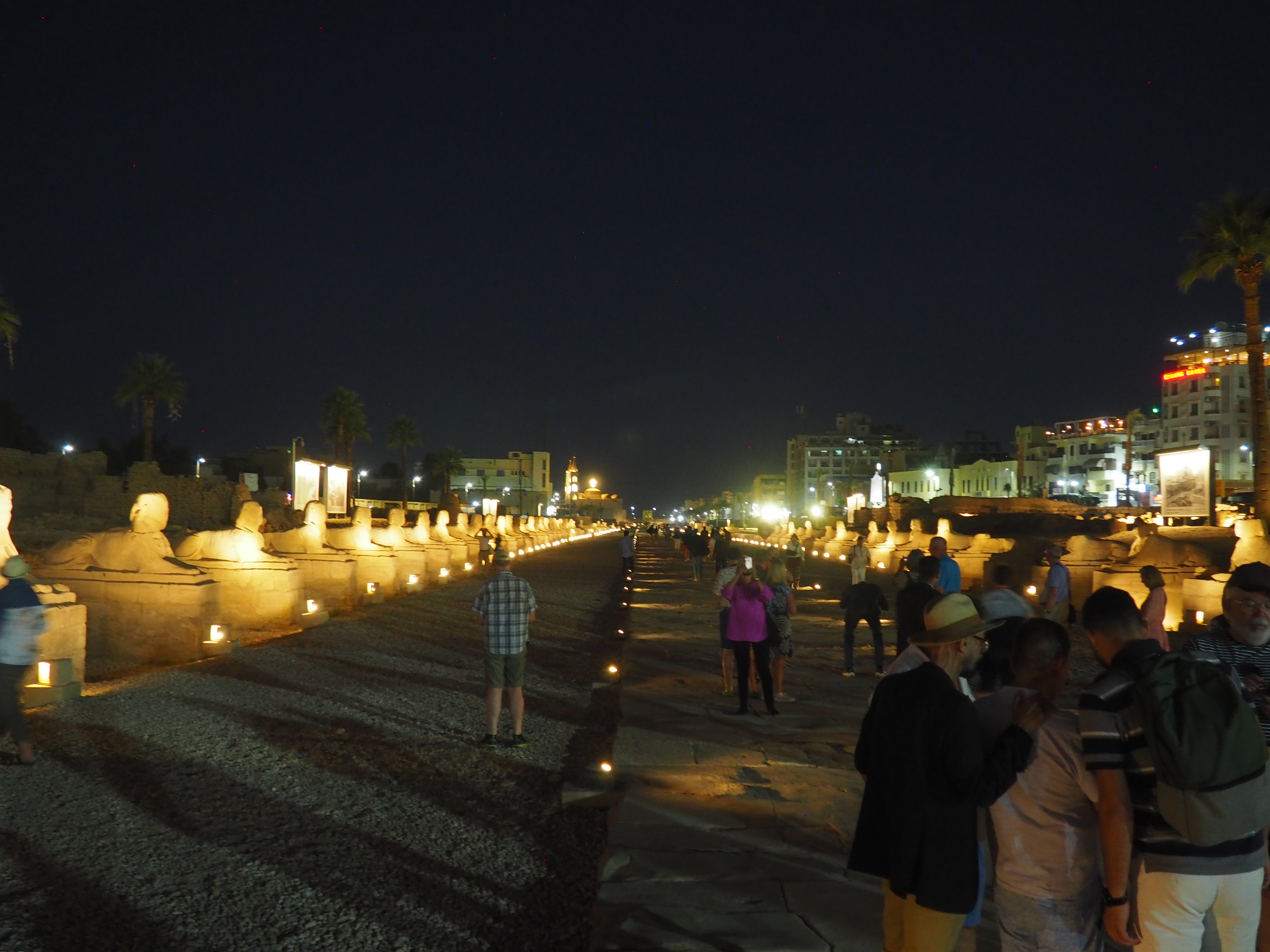Karnak Temple
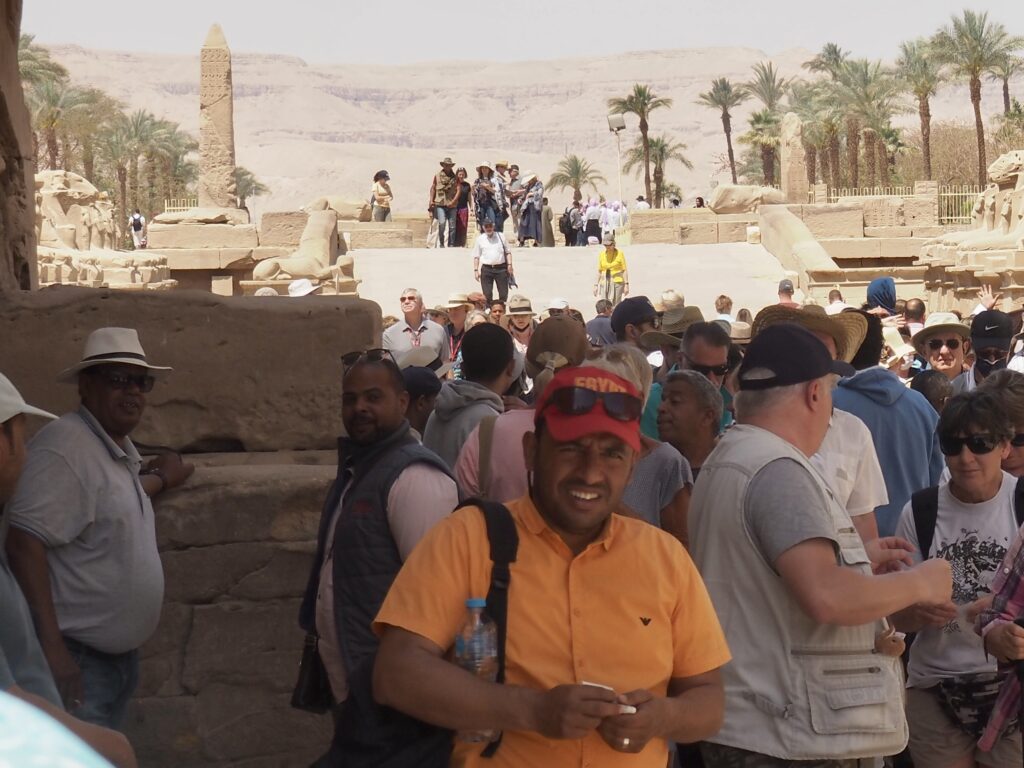
Karnak Temple is the #2 tourist destination in Egypt, after the pyramids at Giza.

Roughly 30 Pharaohs contributed to the overwhelming nature of Karnak Temple, an immense complex of buildings and themes constructed from the Middle Kingdom (2000-1700 BC) through to the Ptolemaic Age (305-30 BC, put to a close with the fall of Cleopatra).

Karnak is connected to the other major temple complex in Luxor (Luxor Temple) by a mile and a half long causeway lined with sphinxes. Every year a procession would alternately go from one to the other so that the resident gods could visit.

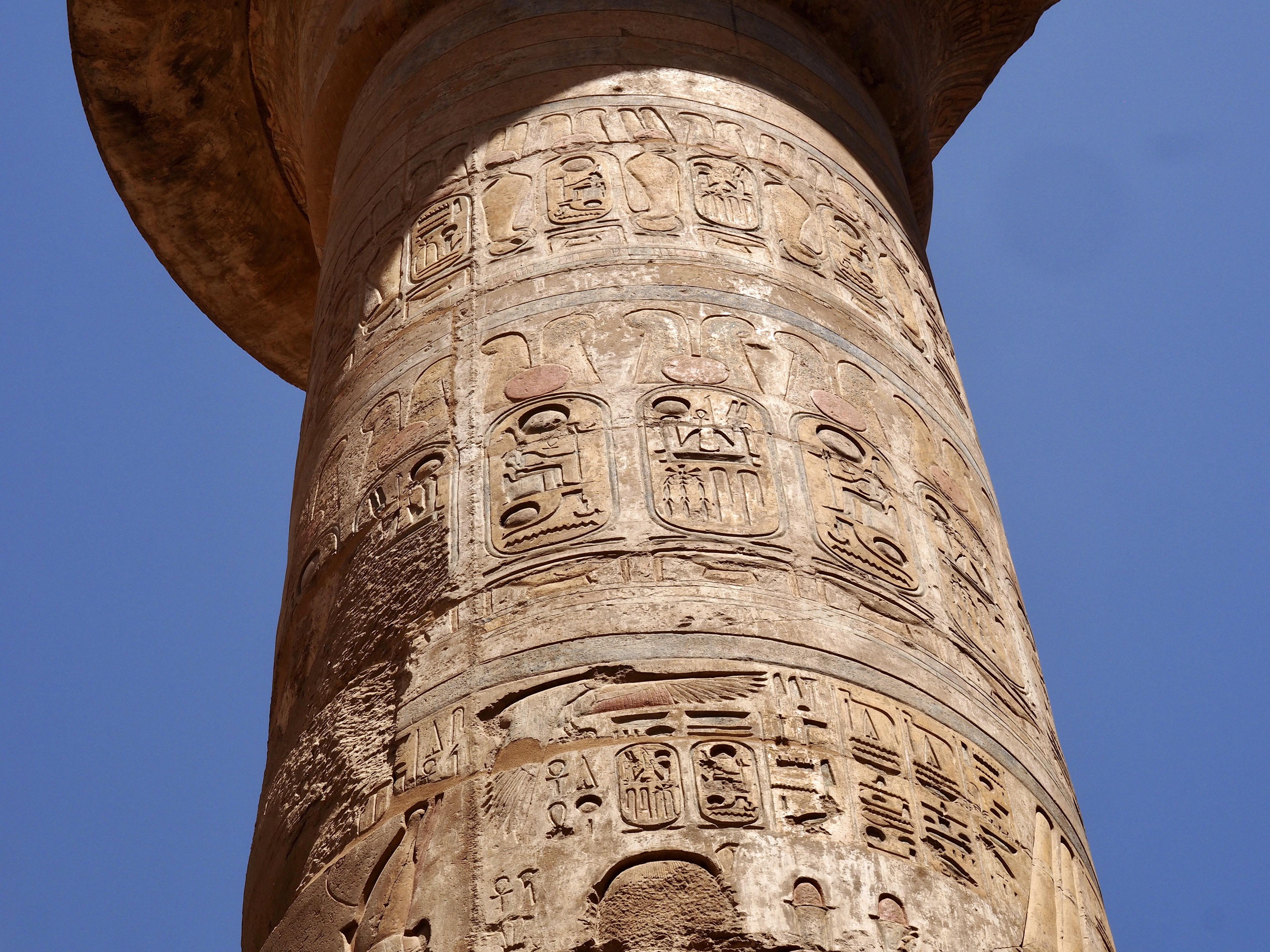




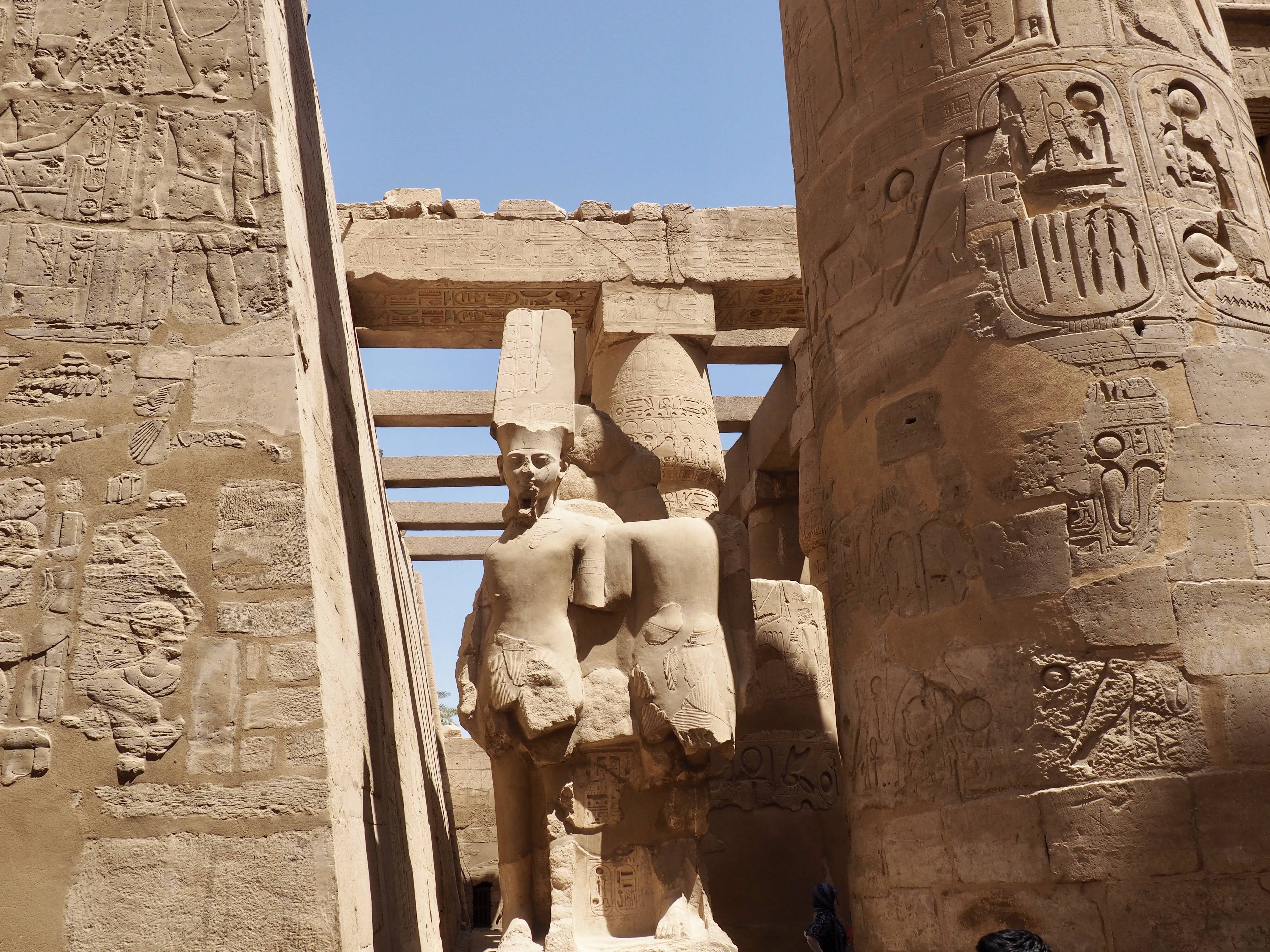



134 massive columns carved in place, 12 nearly 70 feet tall with a diameter of 10 feet, the remainder half that height and not just carved, but elaborately, densely, intricately carved with the stories of gods and men told with both images and a rich language we’ve been able to unravel thanks to that Ptolemaic Age when Greek came to Egypt. The hieroglyphic writing system, by the way, can be read left to right, right to left, or top to bottom, depending on the overall design of the message (the esthetics being important, thank you). The ovals that have a line at one end always enclose a royal name and are called a cartouche.
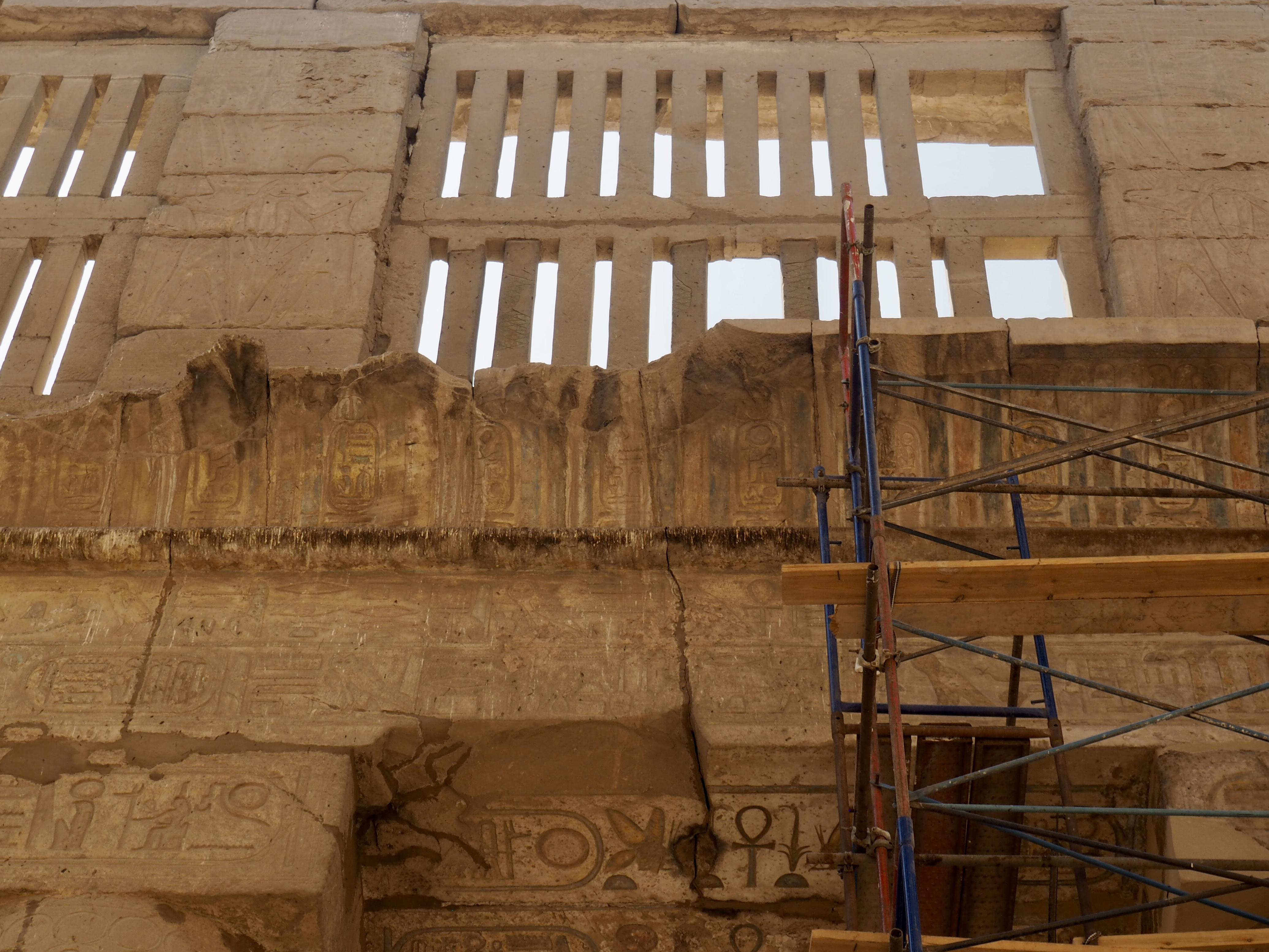
The ancient Egyptians were manipulators of light, creating openings to shine light on specific ornamentations at specific times. The color you see in the ornamentation, by the way, is all original from the time it was created. Obviously, it has persisted better when protected from the light.



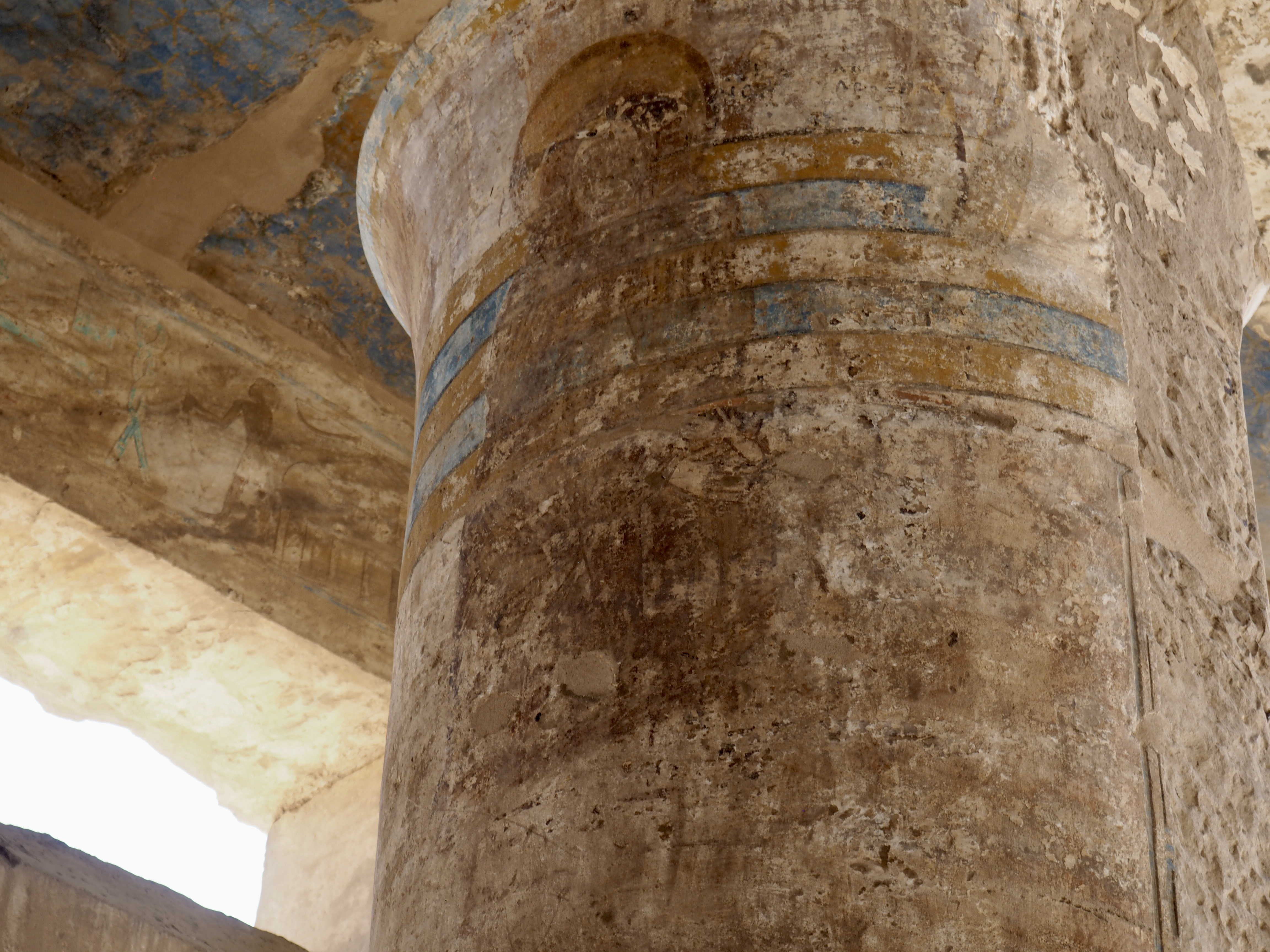

When Emperor Constantine adopted Christianity as the state religion, “pagan” temples were ordered closed and Christian churches were established in some of them, including here at Karnak.

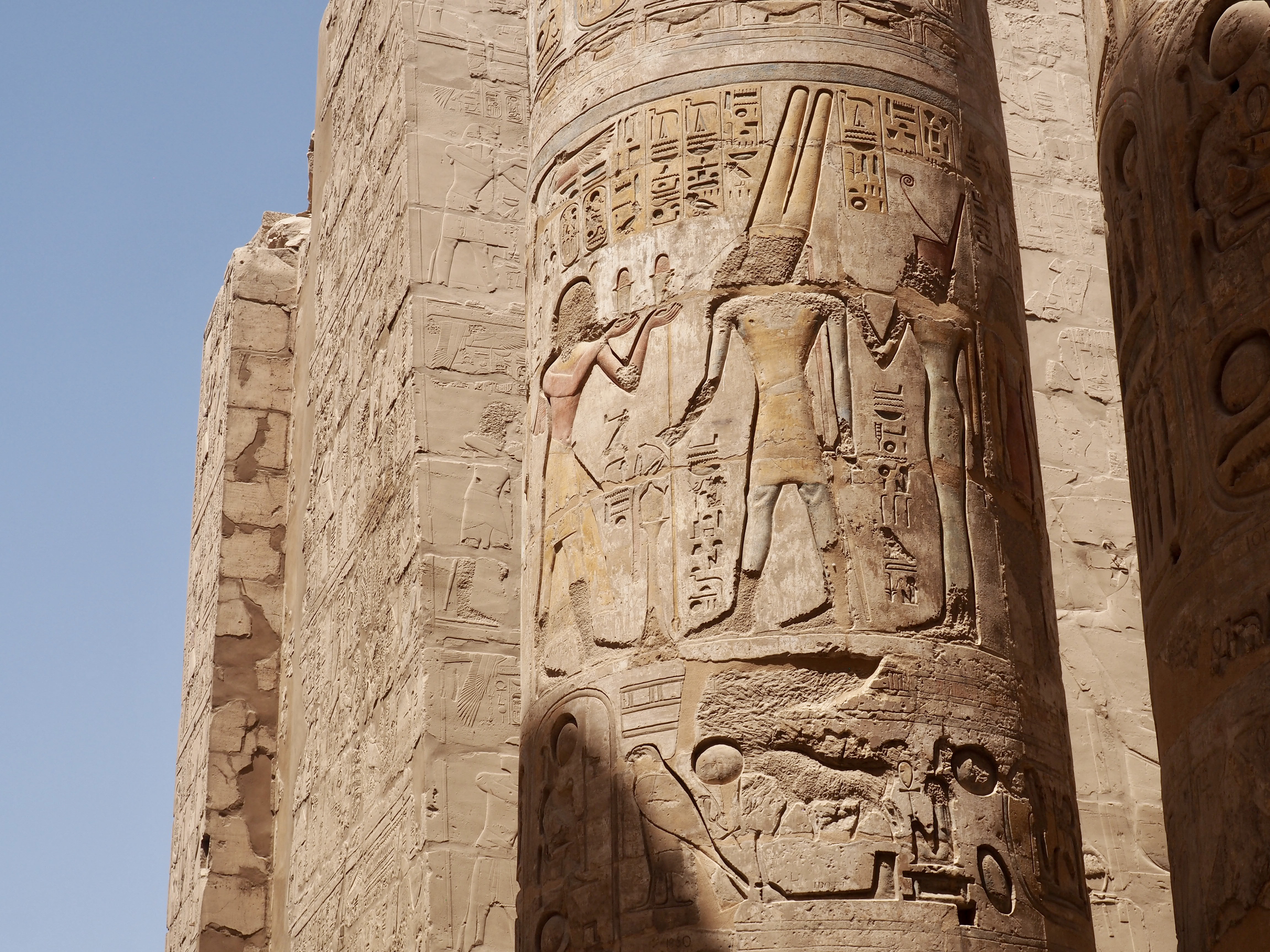


Luxor Temple
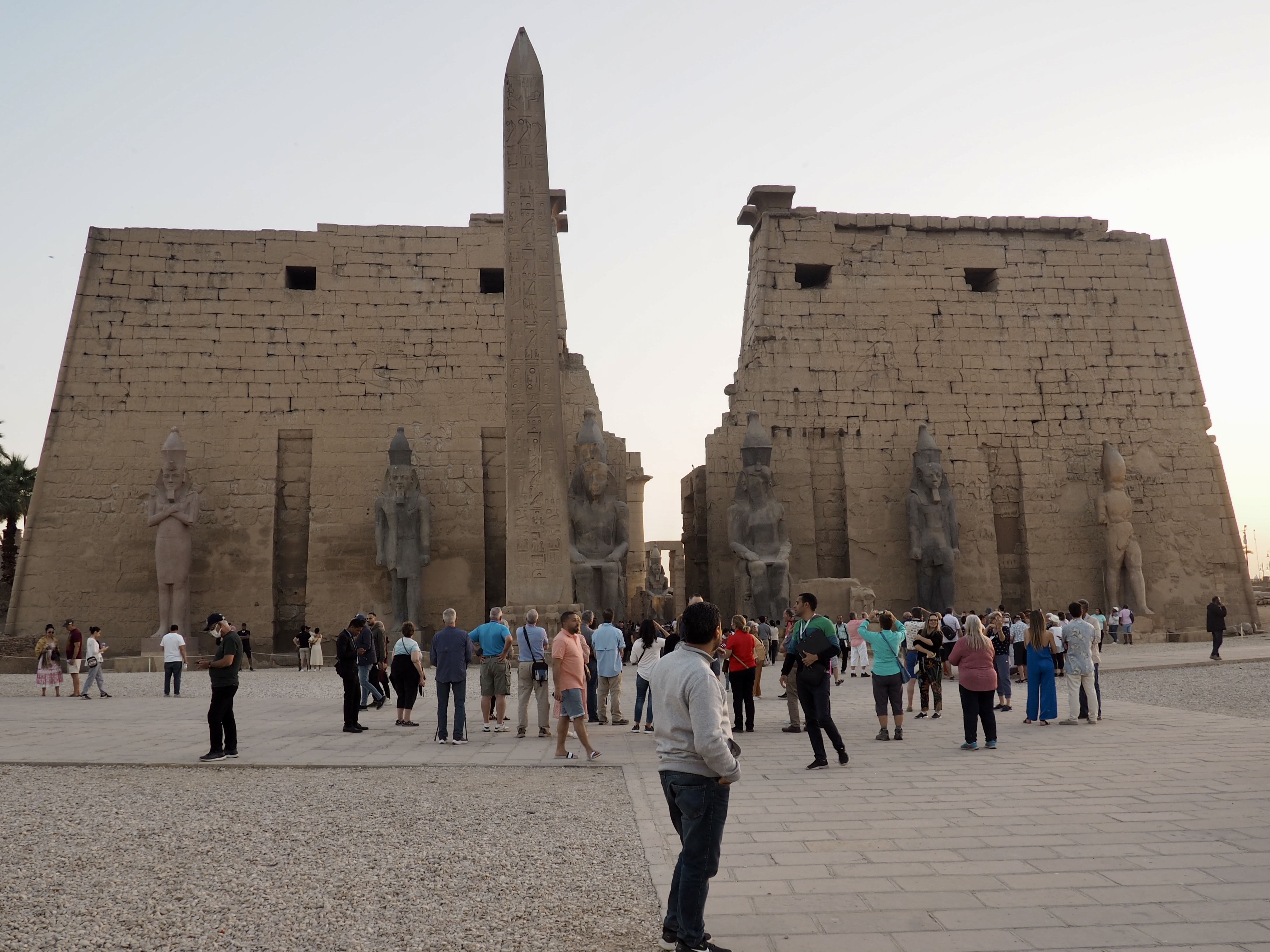
Yes, down at the other end of that long sphinx-lined causeway, is Luxor Temple. Equally imposing, if a little smaller in overall footprint to the enormous Karnak Temple complex. It was started around 1400 BC and was dedicated to Egyptian kingship. This is where Pharaohs liked to be crowned. The missing obelisk (alas, destroying the symmetry) is in Paris and those statutes in pink and black granite are all Ramses II, the Ramses.


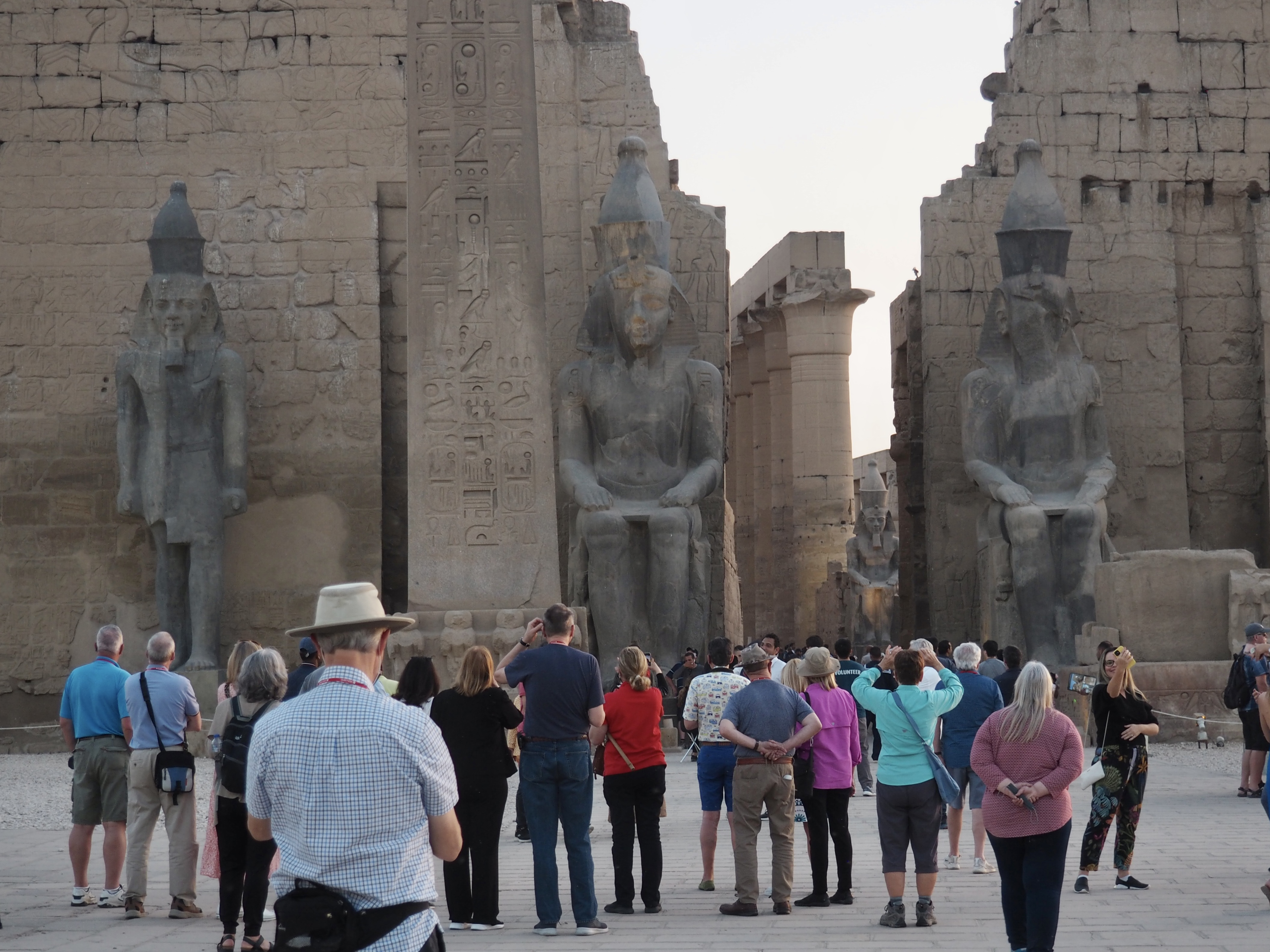

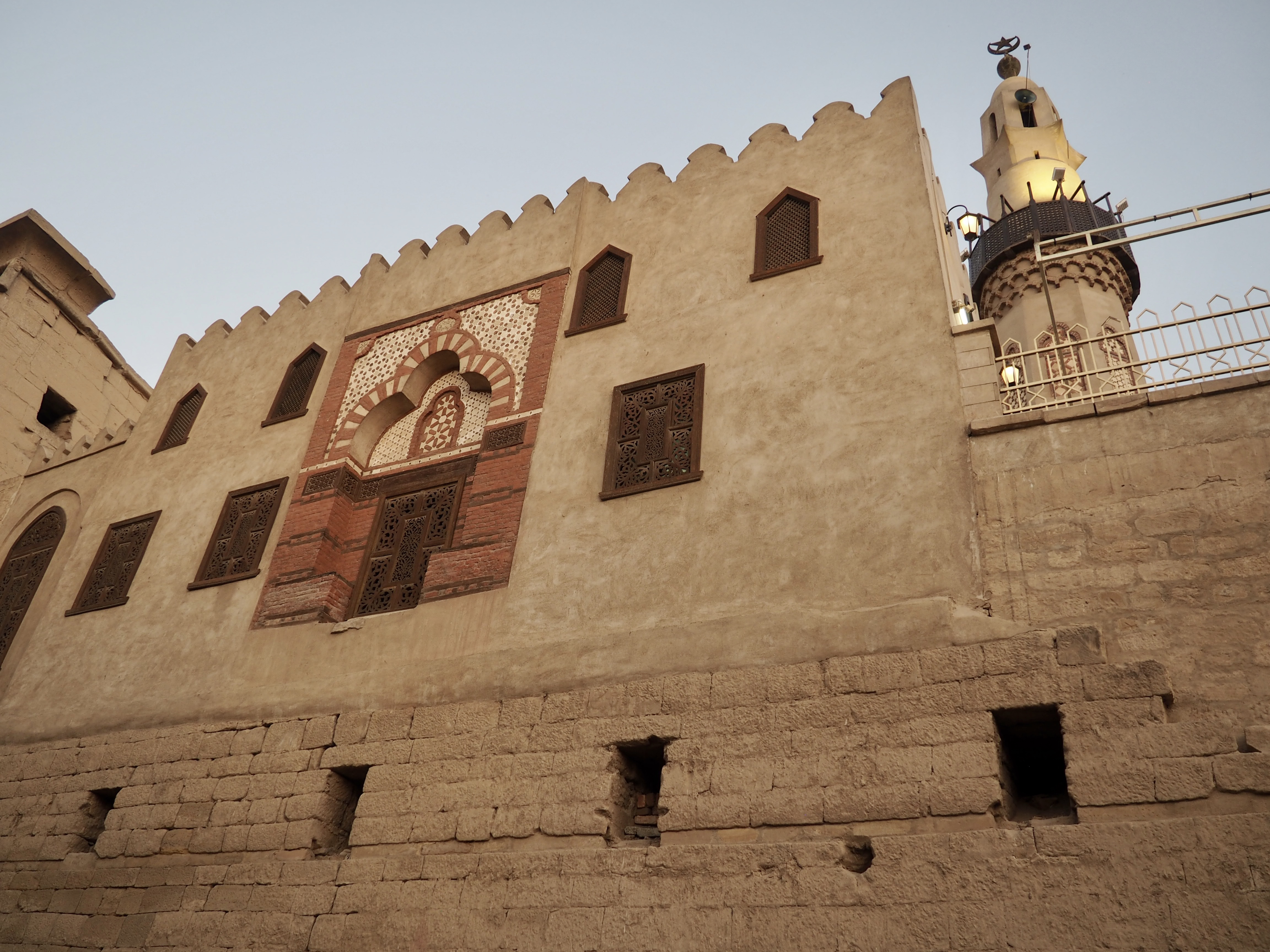
In 395 the Romans established a church here in Luxor Temple. Upon the Arab conquest, the church was converted to a still-active Mosque in 640, so that the building has been in continuous use as a place of worship for 3400 years.

The climate of Egypt has changed from that of a desert cleaved by a narrow band of green to become significantly more humid with increasingly high ground water. This is due to the damming of the Nile at Aswan with the Aswan High Dam and the magnitude of Lake Nasser behind it. This is wreaking havoc on the ornamentation of the ancient Egyptian monuments which is increasingly sloughing off due to the dampness creeping into the stone on which it is affixed. One initiative to try to help is by the University of Chicago which has focused its researchers on tracing the outlines of images which are disappearing.
